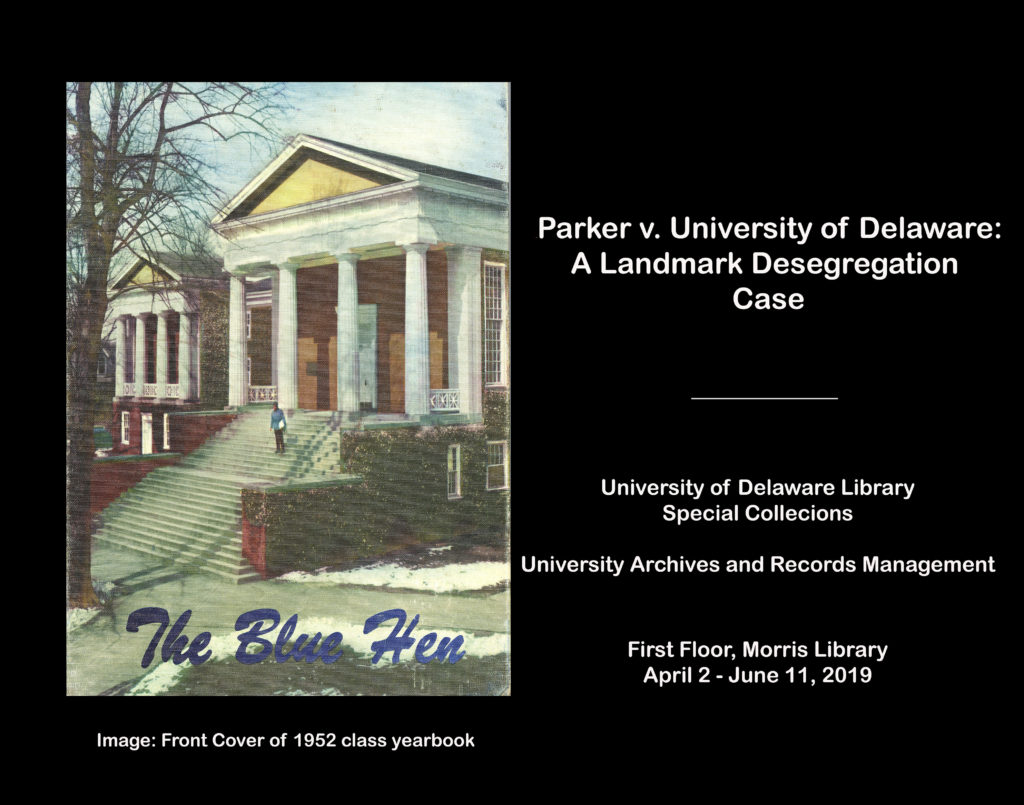
A former slave state, Delaware remained racially segregated well into the 20th century. The University of Delaware was no exception. That is, until 1950, when Louis Redding, the first African American admitted to the Delaware bar, represented ten black students who had been denied admission to the University due to their race. In the Parker v. University of Delaware, Redding argued that, in denying admission to the students, the university had acted unconstitutionally, violating the “separate but equal” clause of Plessy v. Ferguson. At the time of the lawsuit, the students were attending Delaware State College (now Delaware State University), a historically Black institution. Judge Collins Seitz of the Delaware Court of Chancery ruled in favor of the plaintiffs, declaring that the quality of education at Delaware State College was clearly unequal and that, as a state institution, the University of Delaware was constitutionally required to admit black students. This exhibition features documents related to the lawsuit. It was curated by UD undergrad Caleb Owens, editor of The Review, the University’s student-run newspaper.

